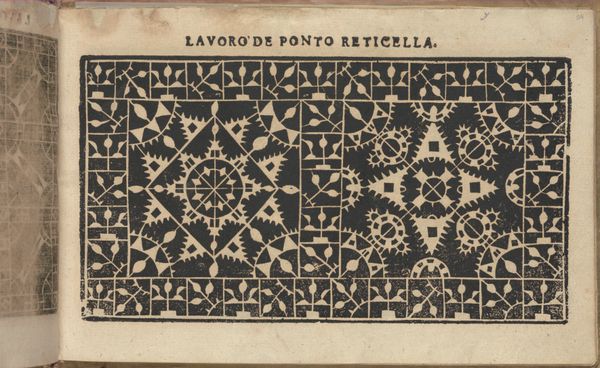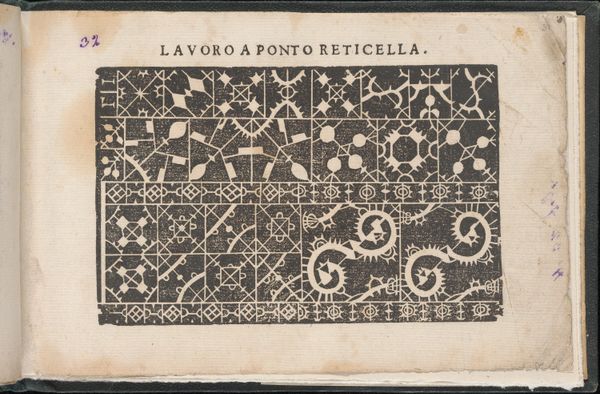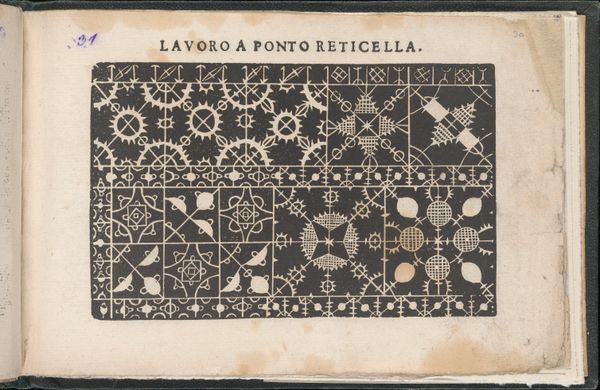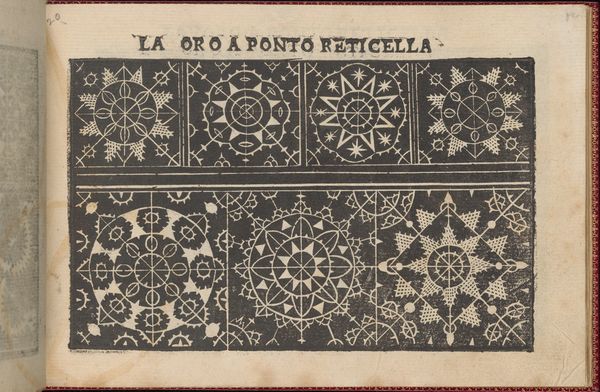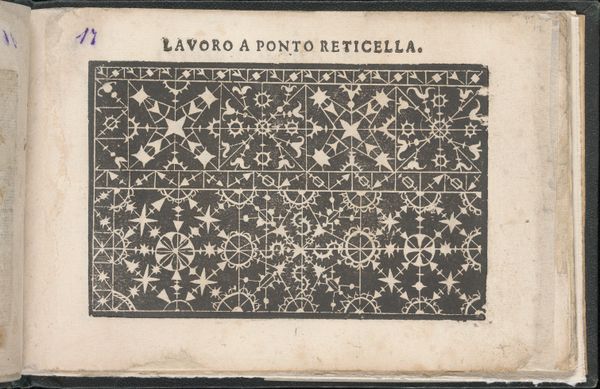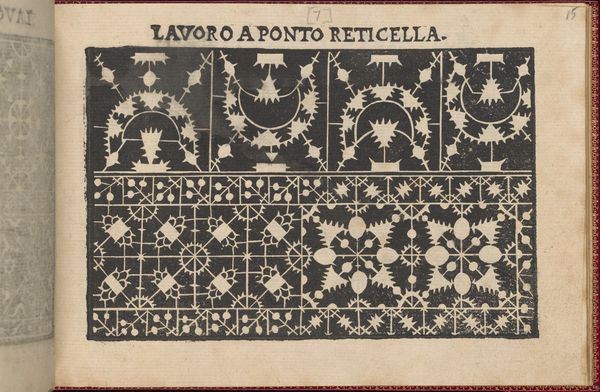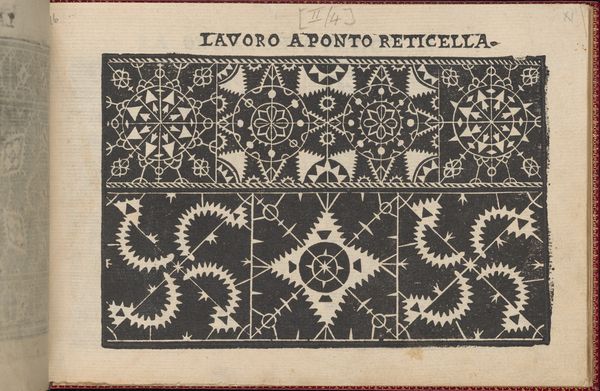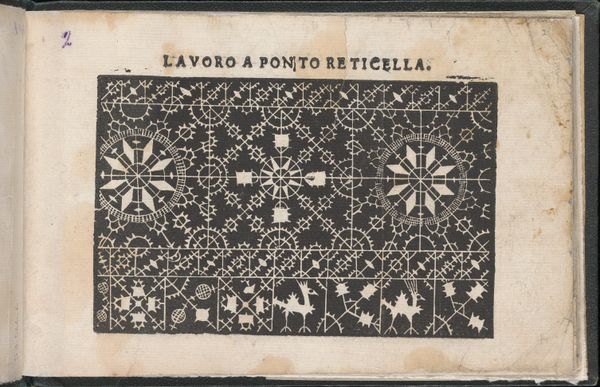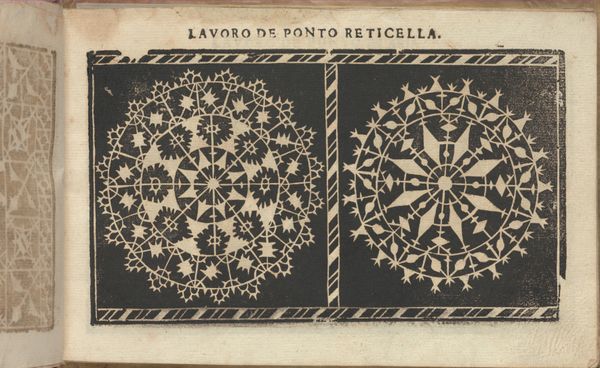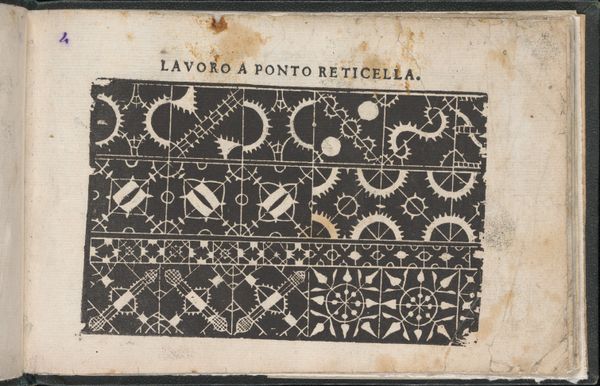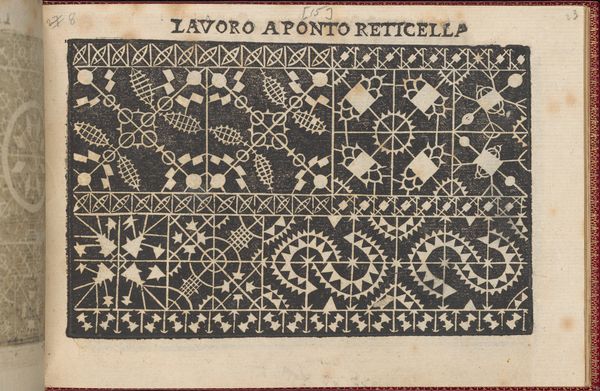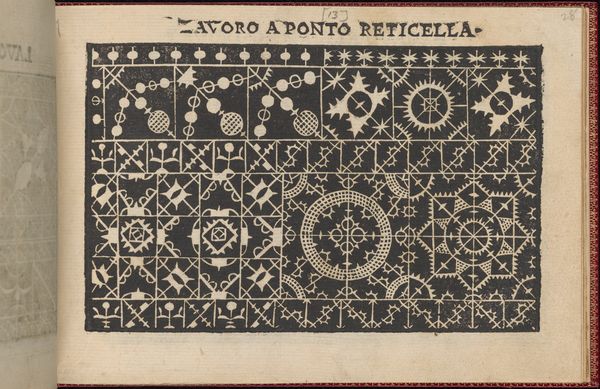
Studio delle virtuose Dame, page 17 (recto) 1597
0:00
0:00
drawing, graphic-art, print, paper, engraving
#
drawing
#
graphic-art
# print
#
book
#
paper
#
11_renaissance
#
islamic-art
#
engraving
Dimensions: Overall: 5 1/2 x 8 1/16 in. (14 x 20.5 cm)
Copyright: Public Domain
Curator: This is a page from "Studio delle virtuose Dame," a book of patterns dating back to 1597, authored by Isabella Catanea Parasole. It is held at the Metropolitan Museum. The work is executed as an engraving printed on paper. Editor: What immediately strikes me is its graphic power – a bold interplay of black and white creating these mesmerizing, almost hypnotic forms. It's far from the softness I often associate with Renaissance art. Curator: Indeed. Parasole, a fascinating figure herself, was not only an artist but also an entrepreneur. This book catered to the fashion of the era, showcasing patterns for lace making. Specifically, this page shows “Lavoro de ponto reticella,” an early form of needle lace. Editor: So, these intricate geometric shapes served a very practical function. The recurring motifs, like the wheels and floral derivatives encased in rigid squares, evoke a strange harmony between organic growth and geometric precision. I am trying to find Islamic influences here too. Curator: Note the structural clarity of the composition, the precise, almost mathematical arrangement of elements. Consider it beyond its utilitarian purpose – the piece invites a deep consideration of form and pattern. Islamic art’s love for geometric patterns has certainly diffused, perhaps subconsciously, through European culture. Editor: Precisely. The wheels themselves – are those stars radiating energy, contained by their chequered cases, or stylized suns hinting at divinity? This is, after all, an era steeped in symbolism. What narratives are woven into these images of geometry, can you explain? Curator: This work participates in a well-developed tradition of pattern books, allowing designs and motifs to be circulated and adapted widely. I would hesitate to read the wheels and stars as overt symbolism beyond representing an aesthetically pleasing, culturally resonant form suitable for delicate lacework, though, granted, in this era ornament always speaks. Editor: I agree with your assessment of the cultural exchange. I love how this piece operates on so many levels. It is technical prowess, but the design breathes – it speaks to cultural memory, religious influence, a society on the verge of enormous changes. It reminds us beauty can emerge from very practical circumstances. Curator: Yes, seeing how Parasole managed to blend utility and high artistry really reframes our perception of Renaissance printmaking, doesn't it?
Comments
No comments
Be the first to comment and join the conversation on the ultimate creative platform.


